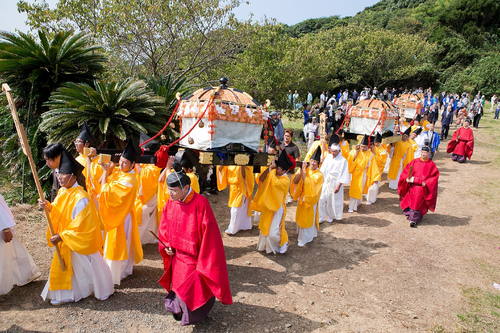Sacred Japanese island declared a UNESCO World Heritage site

Image: UNESCO official website
Okinoshima, an ancient ritual site found in the Munakata region of the Fukuoka Prefecture, has been added to the list of UNESCO (United Nations Educational Scientific and Cultural Organization) World Heritage sites.
“Located 60 kilometers off the western coast of Kyushu island, the island of Okinoshima is an exceptional example of the tradition of worship of a sacred island,” states UNESCO. “The archaeological sites that have been preserved on the Island are virtually intact, and provide a chronological record of how the rituals performed there changed from the 4th to the 9th centuries CE.”
“Integrated within the Grand Shrine of Munakata, the island of Okinoshima is considered sacred to this day,” the official site of UNESCO further states.
According to a report on The Japan Times, the rituals performed on the island involved praying for maritime safety whenever exchanges between the Japanese archipelago, Korean Peninsula and the Asian continent were taking place.
Some 80,000 items excavated on the island were also said to have been designated as national treasures.
Article continues after this advertisementThe Okinoshima island official website states that visitors to the island must completely undress before coming ashore. This process is called “misogi” where bathing naked in the sea is said to remove impurities in the body. Taking mementos from the island is also prohibited.
Article continues after this advertisementMeanwhile, Japan Today reports that women are banned from setting foot on the island, as dictated by ancient rules.
With this latest addition, there are now 21 Japanese entries on the UNESCO World Heritage site list. Alfred Bayle/JB/rga